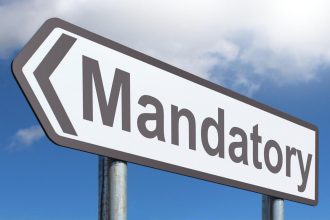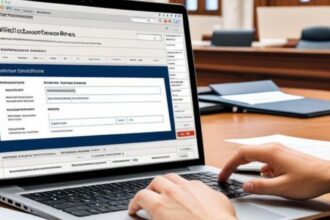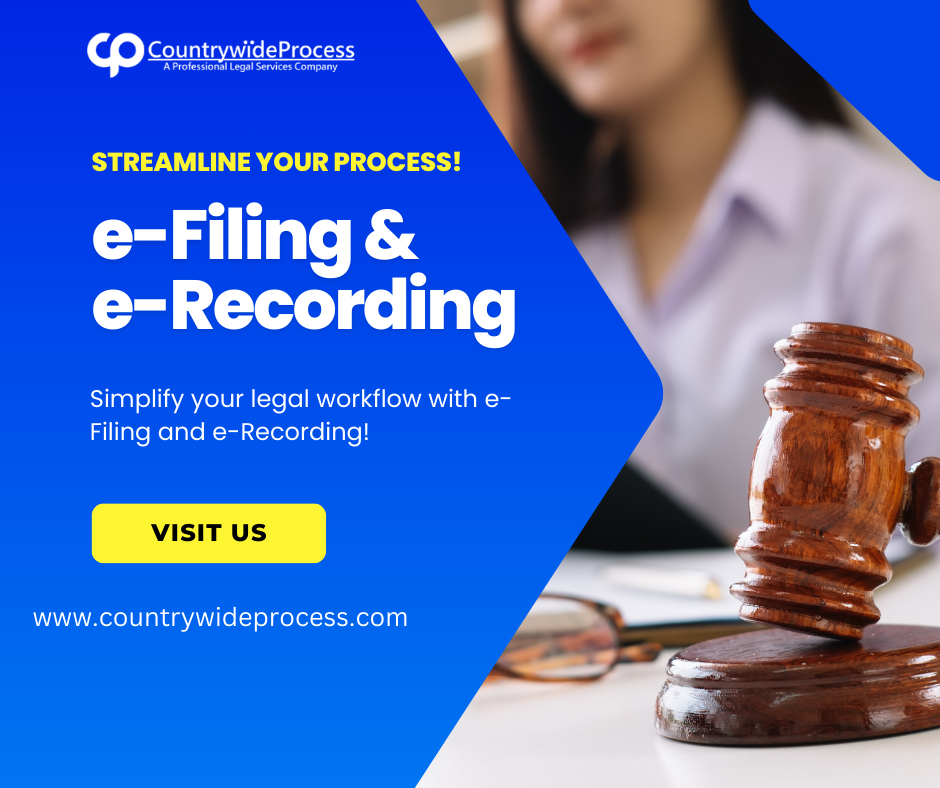With the availability of good legal documentation systems, one cannot overemphasize the importance of legal document management in the present digital era. In this regard, there has been notable progress in the implementation of e-Filing and e-Recording for abstracts of judgment.
These electronic processes also have several advantages, which make legal processes smoother and easier to obtain. Across the United States, especially in California, the changes that have occurred through electronic filing and electronic recording have greatly influenced how abstracts of judgment are dealt with to bring about efficiency and reduction of errors.
What are e-filing and e-recording, and what is the difference between them?
Electronic filing means submitting any legal documents to the court electronically. It also means that instead of the attorneys and the parties to a case coming into the court physically to file physical documents, they do so through the system.
The same is true for electronic recording, which is the process of submitting documents such as abstracts of judgment to the county recorder’s office through electronic means. They do not require paper work or paperwork, hence eliminating paper-related issues such as loss of documents.
Through the use of electronic filing and electronic recording, the legal practitioners and other people involved in the legal processes can reduce their time of employment and inconveniences they undergo while filing their documents physically. Rather than spending long hours in queues at courthouses or county offices, the users can make their submission from the comfort of their offices or homes.
Benefits of Self-Help e-Filing and e-Recording Abstracts of Judgment
Electronic filing and electronic recording of self-help abstracts of judgment have the following benefits:
Increased Efficiency and Speed
Another benefit that is peculiar to electronic filing and electronic recording is the fact that it gains time and is quicker than the traditional methods. The normal routine procedures followed in filing and recording abstracts of judgment follow long queues and time wastage due to shuffling of papers. Electronic filing allows you to file documents with a single click, and the same is true for electronic recording. It can therefore make a significant difference in the total time spent managing legal issues.
Less Errors and Greater Precision
The effects of e-Filing and e-Recording on increased effectiveness, accuracy, and error reduction are also noteworthy. It is also important to note that manual document filing is very likely to cause errors such as incorrect data entry or missing documents. Therefore, many electronic filing systems incorporate validation checks and automatic processes to ensure the proper completion and accuracy of all documents before filing. As a result, data entry on electronic recording platforms typically includes check mechanisms that ensure that all relevant fields are entered correctly, reducing the likelihood of errors.
Greater Accessibility and Convenience
Compared to traditional methods, both electronic filing and electronic recording add more flexibility of use to the overall equation. By traditional means, putting of documents usually involves physically presenting documents at certain offices during working hours. This can be problematic when the concerned person has no time to visit courthouses or county offices, or if they live a long distance from them. Both e-Filing and e-Recording provide users with the convenience of making their submissions at any time and from any place that has an internet connection. Such qualities can be of great benefit, especially to people who have to file papers or documents at odd times or from other locations than the office.
In what way do e-filing and e-recording facilitate legal practices?
Streamlined Workflow
Electronic filing and electronic recording enhance the operations that relate to the handling of abstracts of judgment. Electronic document submission eliminates the need for multiple copies because a given document can be submitted to different offices numerous times without ever being lost. Once sent electronically, these documents go directly to the various departments, thus eliminating several follow-up calls or actual physical visits to courthouses or county offices.
Enhanced Tracking and Notifications
As for the additional opportunities, it is important to mention that electronic filing and electronic recording systems can contain tracking and notification features. The organization also immediately shows users the status of their submissions and sends them receipts and messages indicating that there is a problem with a submission. This transparency is helpful in letting the users have information on the status of the filings and recordings they made of legal matters, hence efficient in handling the legal issues.
Cost Savings
There are also other benefits to the transition to e-filing and e-recording, including the fact that other filing techniques involve many charges, among them rationing costs of printing, mailing, and physical storage of the documents. Adopting electronic systems to handle the above processes greatly minimizes these costs.
Further, while using the resources online, there is no need to physically commute and spend time in lines, which also reduces the overall administrative expenses for law firms as well as individuals.
Getting started with e-Filing and e-Recording
Selecting the Right System
Consequently, in order to make effective use of electronic filing and electronic recording, it is necessary to choose the right system. California courts and the county recorder’s offices, for the most part, have specified avenues for e-Filing and e-recording. This is because it is important to note that the selected system should support the existing organizational functionality and have tools required by your legal compliance.
Training and Support
Most electronic filing and electronic recording programs have some tutorials that assist those who are using them for the first time. These are useful to help you go through the system so that there is an easy transition when working with the new system. These training sessions could be used to assist an individual in getting the most out of e-Filing as well as e-Recording, which are tools that could aid legal procedures to be improved.
Adhering to Guidelines
Last but not least, make sure you follow all of California’s electronic filing and electronic recording rules, regulations, and policies. You should adhere to the definite requirements set by each court or county recorder’s office. All of these guidelines will help your law firm reduce time and resources spent filing and recording judgment abstracts.
Conclusion
The two services, e-filing and e-recording, have revolutionized the management of abstracts of judgments in California. These electronic processes offer numerous advantages, including increased working efficiency, improved accuracy of results, and increased accessibility of legal aids for practitioners and clients. As the legal environment transitions to electronic filing and recording, it is crucial to promote their proper use in document management.






